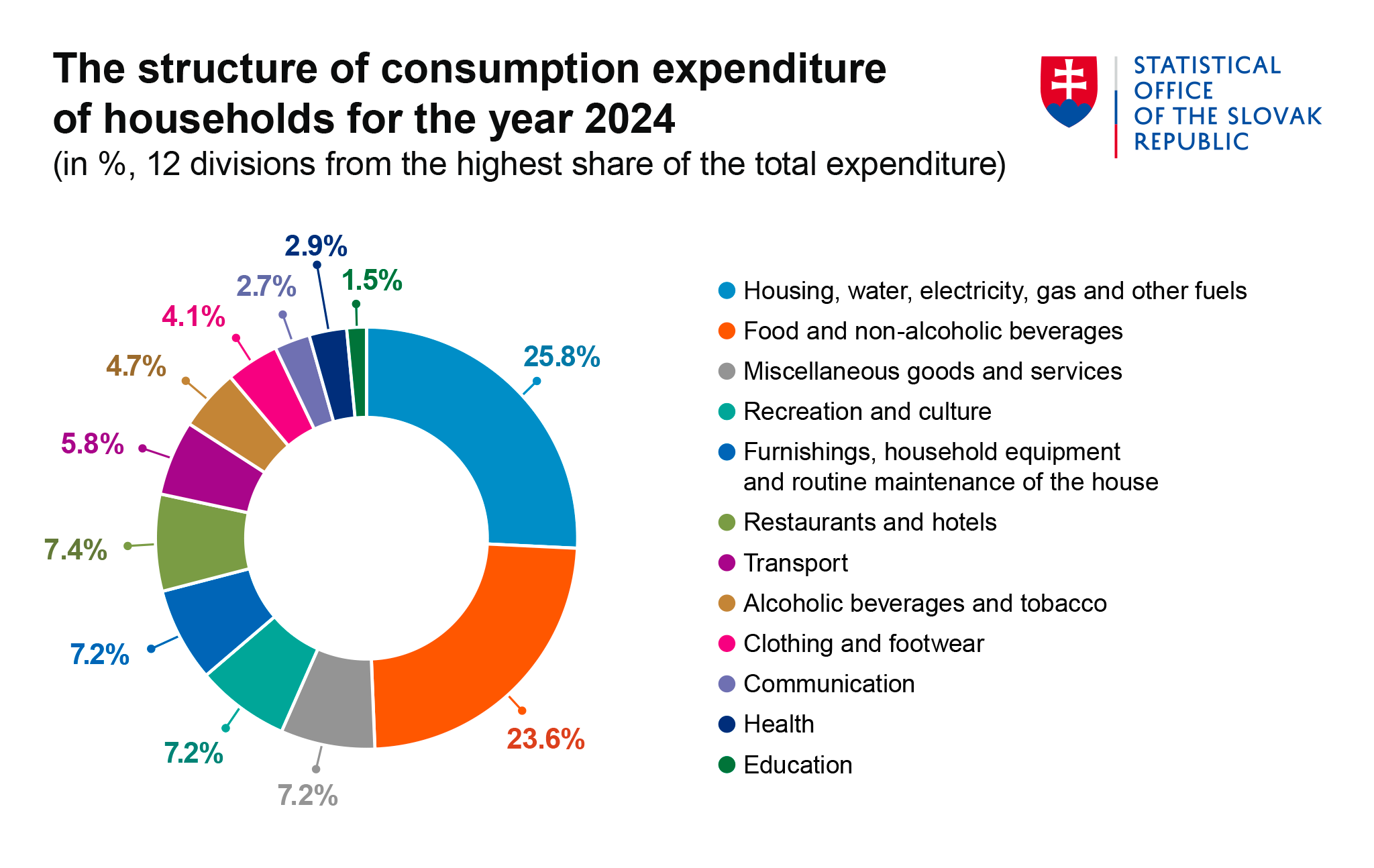The first month of the academic year brought a slight slowdown in the inflation rate to 2.6%
The slight price increase compared to August by 0.1% was mainly due to a price growth in education fees and meals in school canteens. However, they compensated for lower prices of meat and fuel in September. In a year-on-year comparison, overall inflation was mainly influenced by a higher prices of food and education and a lower prices of fuels.
In September, consumer prices of goods and services rose on average by 0.1% month-on-month, which was less than in the previous two months. Consumers paid 2.6% more in September than a year ago, inflation slowed to the level recorded in July.
Download high resolution chart format PDF (85 kB) or PNG (106 kB).
Month-on-month development - September 2024 compared to August 2024
Consumer prices of goods and services rose slightly in September, by 0.1% on average. Compared to August, prices increased in 7 out of a total of 12 divisions (household expenditure groups), ranging from 0.1% to 3.9%. The education division recorded the highest month-on-month price increase. In the other 3 divisions– healthcare, recreation and culture, but especially in transportation – prices decreased month-on-month. In September, only the overall average prices of the food and non-alcoholic beverages division, as well as the communication division, remained unchanged compared to August.
The most fundamental influence on the overall month-on-month growth in prices of goods and services in September was the price increase in the fields of education and food and beverages and hotels. The first month of the new academic year brought price increases at almost all levels of education – from preschool to high school, including art and language schools, as well as various courses. Parents of school children were also affected by the increase in overhead fees associated with meals in school canteens, and meals without subsidies, which increased the prices of all company meals by 2.5%.
A significant share of the month-on-month price growth was also the rise in housing and energy prices by 0.3%. Compared to August, residents paid more for actual rent (2.6%), maintenance and repairs of the dwelling, as well as the removal and disposal of waste, as well as water and sewage but also for imputed rent. Only the prices of solid fuels dropped month-on-month.
Prices in the second most important component of household expenditure, food and non-alcoholic beverages1), remained unchanged on average in September. It was the result of the price reduction of 7 out of 9 monitored food items, especially meat and bread with cereals. Their lower prices were able to balance the month-on-month price increase in the group of oils and fats (by 7.3%), especially butter (by 9.4%), and also in the group of fruits. The prices of non-alcoholic beverages also decreased by 0.2%.
On the contrary, price growth in September was hampered by lower prices of fuel by 4.4% and transport services by 2.1%, but also by a lower prices of package tours at the end of the summer season.
Year-on-year price development in September 2024 compared to September 2023
Year-on-year inflation reached a growth level of 2.6% in September. Year-on-year prices were higher in 11 out of 12 divisions (household expenditure groups), ranging from 0.8% in the housing and energy to 10.9% in education. Only prices in transportation were lower than a year ago.
The most significant impact on the development of inflation in September was the price increase in education, but especially in the food and non-alcoholic beverages division by 3.1%. Both main groups of this division had a growth rate of more than 3%. Among food items, 8 out of 9 product groups had higher prices than last year. Oils and fats, which became more expensive by a quarter year-on-year, and a slight price increase of up to 6% for vegetables, but also bread and cereals, as well as milk, cheese and eggs, affected the result the most. Only meat was sold at a lower price than last year in September (by 0.9%), whose average prices dropped for the second time this year.
In the field of housing and energy, which is the most important component in household expenses, only a minimal year-on-year price increase persists, currently it was 0.8% in September. Within the individual components of this division, the growth in the prices of actual rent, water and sewage, maintenance and repairs of the dwelling was slightly compensated by year-on-year lower prices for imputed rent and solid fuels.
A significant impact on inflation was due to the lower transportation prices, primarily fuel, which was by 13.5% cheaper year-on-year in September. They were also able to compensate for the increase in prices in other components of the division - transport services (by 14.9%) and transport equipment (1.4%).
At the same time, inflation was supported by the effect of price increases in selected divisions from the previous months, which is always reflected throughout the following year. These were, for example, more expensive alcoholic beverages, medical products and services, as well as higher prices for holiday tours, but also for miscellaneous services – food, accommodation, hairdressing, but also social services.
In total, for the first nine months of 2024, consumer prices increased by 2.7% year-on-year
Development of core and net inflation
In September, the total year-on-year inflation rate was 2.6%, core inflation reached 2% and net inflation reached 1.6%. Core inflation and net inflation remained unchanged month-on-month.
Core inflation was affected by a price level growth after excluding the impact of changes in regulated prices (e.g. energy prices) and other administrative measures (e.g. tax adjustments, etc.). Net inflation is core inflation without changes in food prices.











 Help
Help